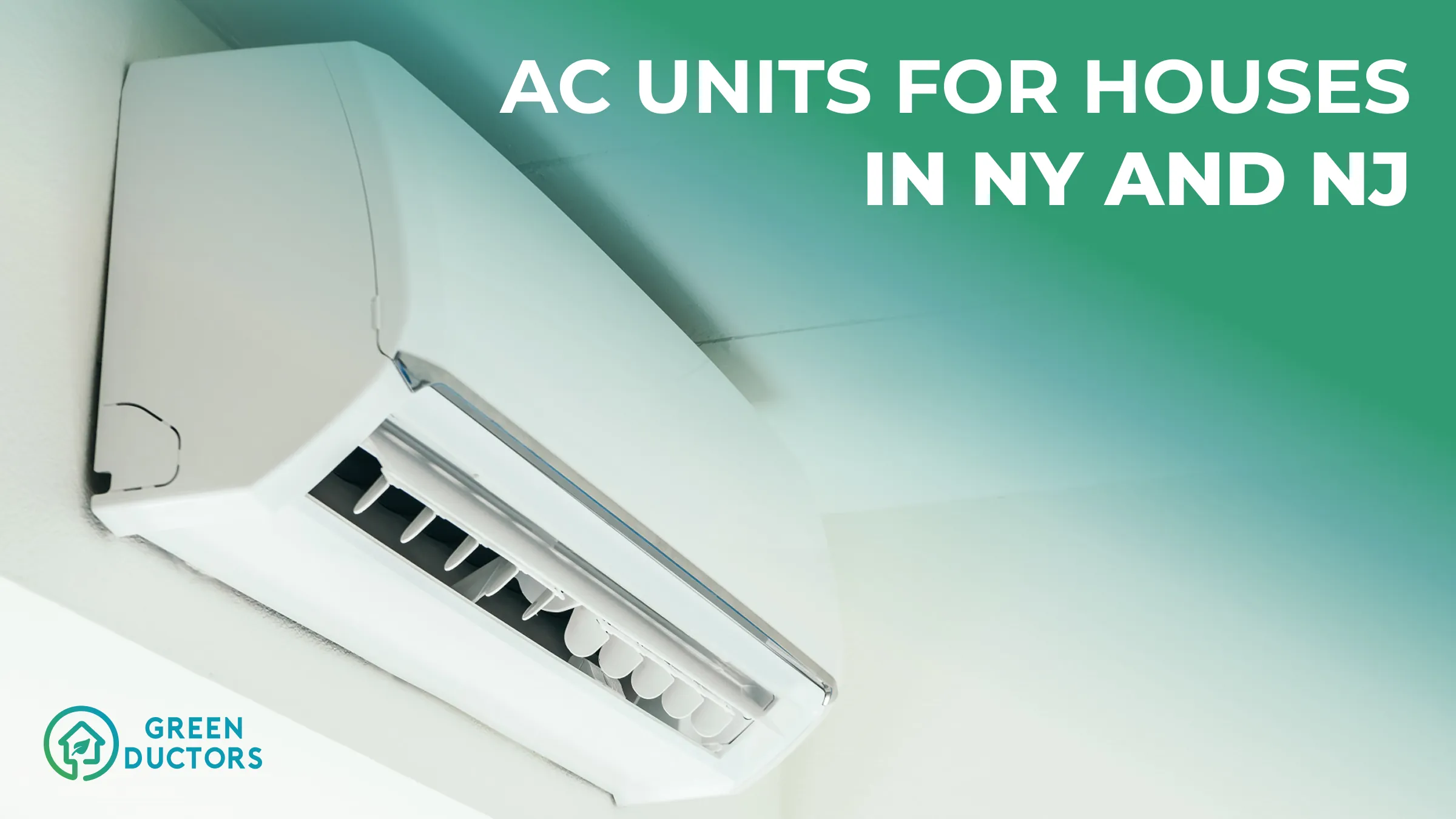Picking between the types of air conditioners available is no easy feat. Making an informed decision can be hard, when there are so many different units on the market. Today we wanted to go over the most common types of AC you can run across in the New York and New Jersey area. Whether you’re looking to install for your home or your business, we hope this article will bring you some insight so you can make the best decision for your space.
Types of AC Units in NY and NJ: Pros and Cons
Central AC System
A popular choice for the majority of the US. A central system is great for big homes and large buildings. It uses ductwork to move conditioned air to different parts of the space. This is useful for consistent temperature control.
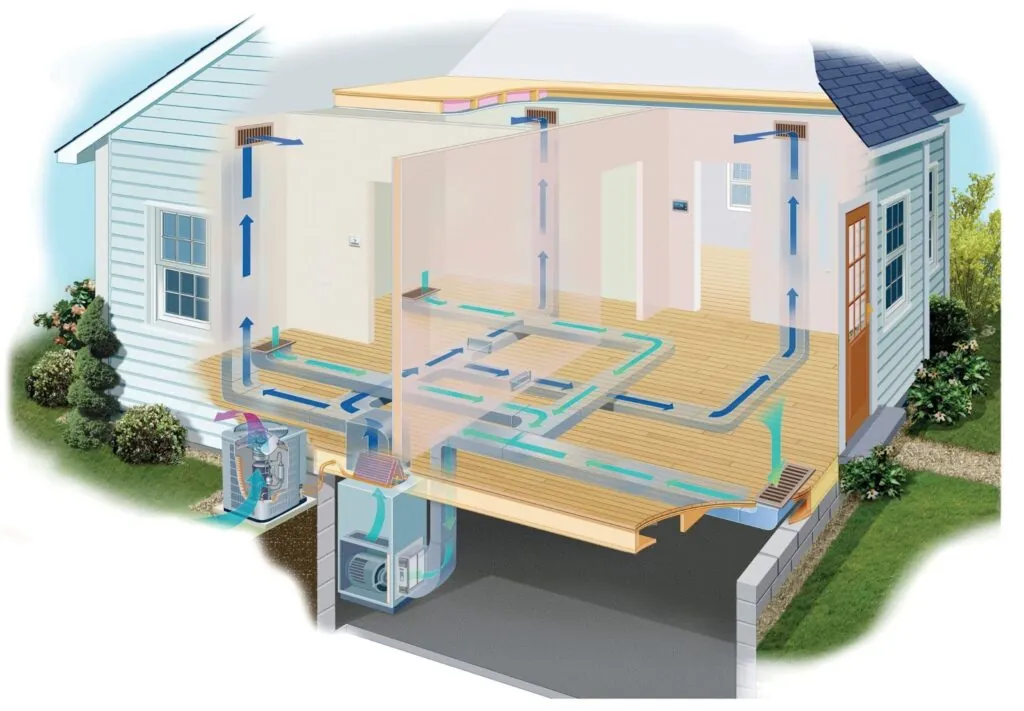
Pros
- Air Quality: These systems have the option to integrate “fresh air intakes” which can lead to improved air quality.
- Efficiency: When it comes to newer models, most have a pretty good SEER (Seasonal Energy Efficiency Ration) rating, which will lead to lower bills and savings down the line.
- Integration: HVAC systems are able to integrate with furnaces or heat pumps to provide year round comfort.
- Whole-Home Control: A single system is able to control the temperature of your whole home.
Cons
- Cost: Being that this system uses ductwork to transfer air from room to room, installation can be quite pricey, especially if ductwork needs to be replaced or installed.
- Space Requirements: This isn’t a small system, and requires significant space indoors and out.
- Maintenance: As with most things regular maintenance is needed for optimal performance. But being that this system uses ductwork, typically professional service is required to properly clean the whole system.
PTAC System
Packaged Terminal Air Conditioners, otherwise known as PTAC units, are self-contained, meaning they have all the needed parts in one. They mount through the exterior wall and are able to both heat and cool a space. Because of their set up, they are a popular choice in apartments.
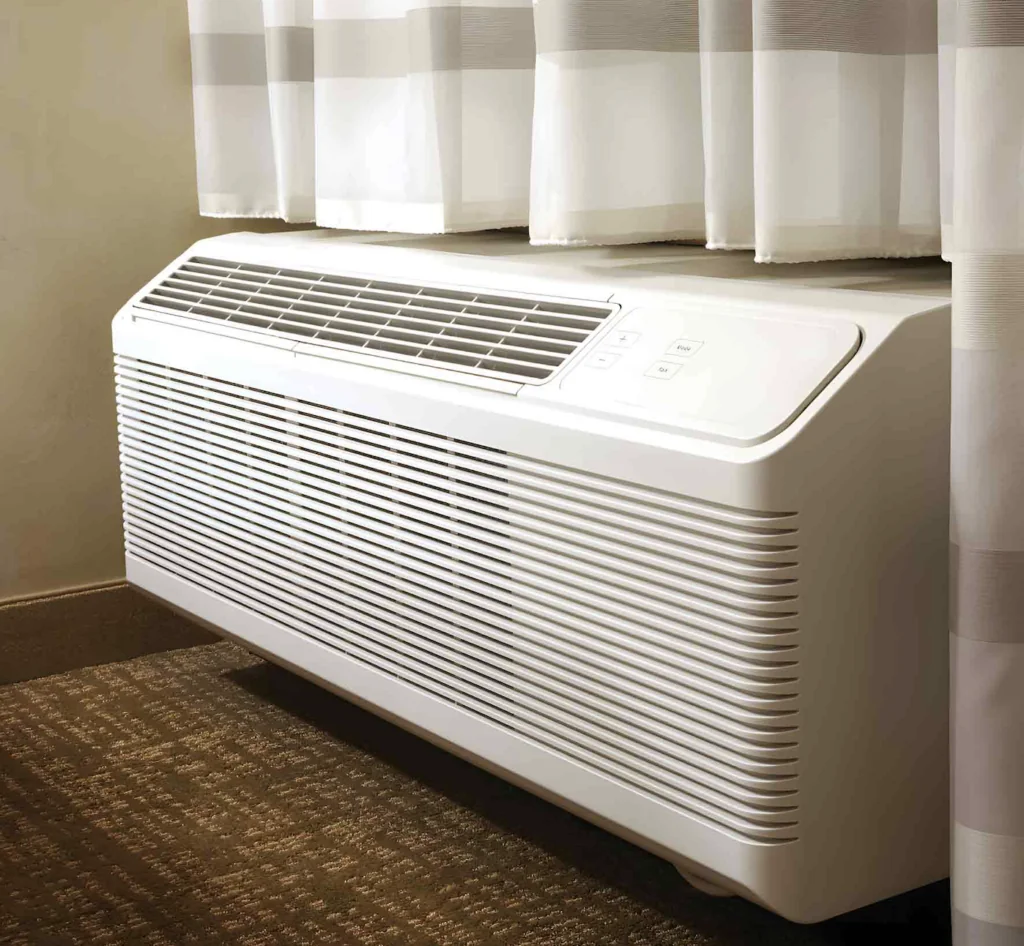
Pros
- Cost: If compared with other systems, PTAC installation is relatively cost effective.
- Setup: This AC cooling system does not require any ductwork, so installation is relatively quick and straightforward.
- Room Specific Control: These systems are great for spaces that require individual temperature control (like hotel rooms).
Cons
- Noise: Since everything is in one unit, including the compressor, these systems tend to be louder than their counterparts.
- Range: “Room Specific Control” can also be a minus, as the system is not able to cool a whole building, and would require multiple units.
- Aesthetics: These units are wall mounted and visible, this may not fit all design plans.
Mini Split System
Mini Splits tend to be a happy middle between PTAC units and central HVAC systems. They are quite common in Europe. The systems are ductless and consist of one external unit and one or more internal additions, depending on your needs.
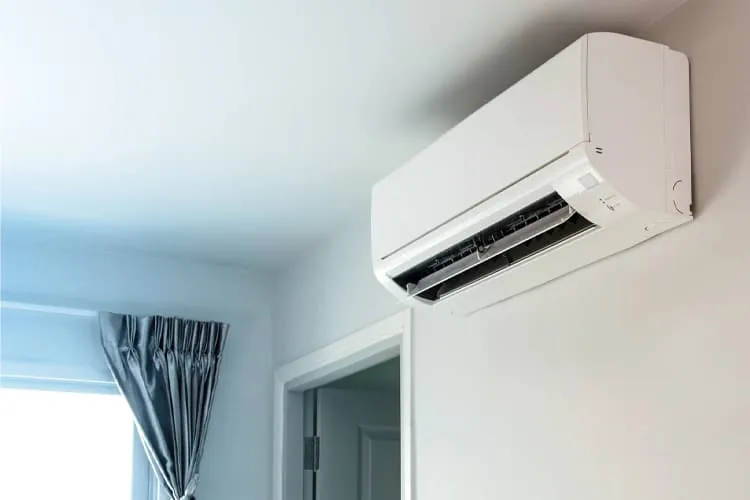
Pros
- Efficiency: For small spaces, these units are quite efficient.
- Noise: Since the compressor is located outside the home, these units tend to be relatively quiet.
- Room Specific Control: Allows for individual temperature control in different rooms.
Cons
- Cost: For a system that ultimately controls one room, mini splits can be a pricier choice.
- Aesthetics: Same as their PTAC counterpart, this system is visible, and that may not appeal to everyone.
- Air Quality: These systems recirculate the air that you have and don’t introduce any fresh air into the space.
Fan Coil Units
Definitely gaining popularity in NYC. These types of AC units are small and don’t require ductwork. They typically rely on a water source for proper operation.
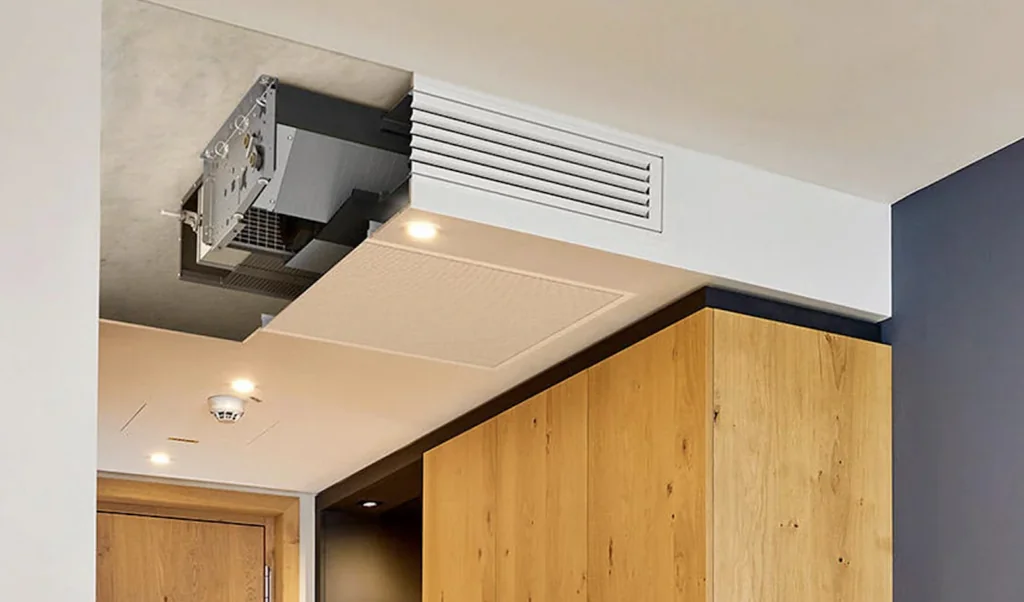
Pros
- Space Saving: These systems tend to be relatively compact and can be installed discreetly in numerous places like above ceilings, within walls, or even under windows.
- Installation: No ductwork is required, which typically yields to simpler installation.
- Room Specific Control: Becoming a popular choice in apartment buildings as this system still allows each occupant to have a separate thermostat and individually control the temperature in their space.
Cons
- Maintenance: Because of their design, access to the filter, coils, and blower are quite restricted by the ceiling. This can affect the quality of cleaning and maintenance. Lack of maintenance often leads to excess dirt and moisture, and ultimately mold. This is the biggest downfall in our opinion.
- Decreased Efficiency: When talking larger spaces, this option tends to consume more energy compared to their centralized counterparts.
- Decreased Air Quality: Like PTACs and mini-splits, these systems do not introduce fresh air into the space.
Wrap-Up: Key Takeaways
All pros and cons can go in different directions, depending on what you’re looking for. For example, for some, having whole home control in one system is a plus, for others, it’s a minus and they prefer to have individual temperature control in each room. Everything is relevant, and it’s ultimately up to you to decide what is best for your space and those in it.
Mind you, it’s important to take into account numerous factors to figure out what system is right for you. Things like budget, space, and priorities all play a part. When in doubt which system to pick, you can always consult with your trusted local professionals, like Green Ductors (888-334-1612). Experts in the field will be able to assess your space and make sure that you make the best choice for your home or business. If you’re ready to pull the trigger on a new cooling/heating system and need some help, don’t hesitate to fill in our request form and someone will reach out to you.

